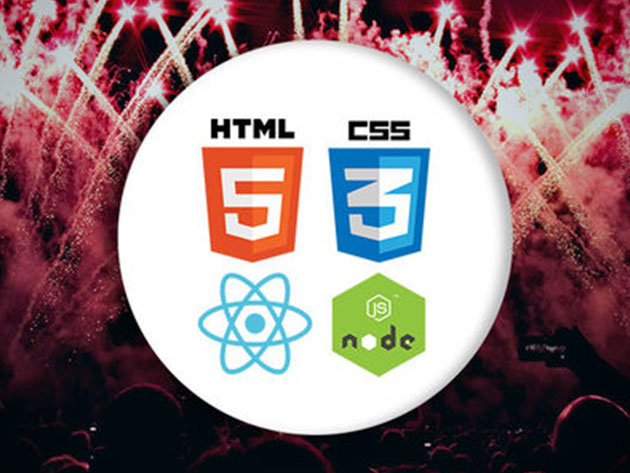
Credits : Itproportal
The world of web development experiences demand constant transformation every year, whether it is related to tools, services, coding, languages, or designs.
Today, every business or individual is making a shift to the online world with a website or web app. As per the 2018 Web Server survey by Netcraft, the internet has more than 200 million active websites. The total number of websites is around ten times more than the active ones. Further, the report reveals that more than 200 new websites are launched every minute today.
The rapid rise in the number of websites brings a lot of new resources to users, but it also increases competition and the need for new skills for web developers.
The world of web development experiences demand constant transformation every year, whether it is related to tools, services, coding, languages, or designs. And with every year, new trends and technologies emerge out to evolve the way developers work. While one year is dominated by static websites, the next by mobile responsiveness, then another by chatbots.
Web development trends in 2019
To make the best out of web development and stand apart from the competition, developers will need to keep track of these web development trends in 2019 and use the same into their work.
1. Artificial Intelligence (AI)
AI is one of the hottest technology today and is used as a core component in most of the digital transformation strategies. More and more enterprises are implementing AI to automate business processes, reduce costs and accelerate time to market.
As per the leading analyst firm Gartner, the business value from AI will reach $1.2 trillion in 2018, up 70 per cent from 2017. Further, it is predicted that AI-derived business value will total $3.9 trillion by 2022.
In 2019, the role of AI will increase significantly in web development arena like never before. Companies will leverage the power of AI in web development to improve productivity and customer satisfaction.
2. Motion User Interface (UI)
The average attention span of human beings is decreasing continuously. From 12 seconds in 2000, the attention span has now come down to an average of 8 seconds. The main reason behind this drastic decline is the increased use of social media, smartphones and highlighted links in the posts and web pages.
In a world where average attention of humans is decreasing, developers will need to implement motion UI in their projects to catch the attention of users. The web pages will require more eye-catchy graphics and intuitive motion UI. This kind of UI changes adapts itself as the users scroll up or down the page, which eventually keep the users engaged.
This suggests that motion UI will be trending in 2019 and beyond.
3. Push Notifications
Website owners started the use of push notifications for encouraging visitors to take action. The push notifications have helped websites to gain momentum and proved as a successful component over the years. Today, the push notifications have become crucial enough to replace the email newsletters.
Businesses are using push notifications to notify visitors about new content, offers and promotions. This feature will be trending in web development as most of the websites will be looking to use it.
4. Modular Design
When there is modularity in design, a system is divided into multiple parts which are called modules. Developers or designers can use these modules independently and use them in other systems as well. What this means is that the components of a design can be reused for creating more web pages, instead of building a web page with a restrictive template.
WordPress’s new editor Gutenberg is also using a modular design approach to allow users to insert content in the form of blocks.
5. Progressive Web Apps (PWAs)
Progressive web apps are those web applications that combine the experience of browsers, websites and mobile applications. The loading of these apps is similar to websites, but they allow users to work offline, push notifications, access device hardware just like native mobile applications.
The organisations that have started to use PWAs in place of simple websites have witnessed a rise in conversion rates and user engagement. Since PWAs provide the experience of both websites and mobile apps, these are very likely to trend in 2019.
6. Responsive and Mobile-friendly Designs
As per Statista, the website traffic from mobile devices is continuously increasing over the years. In 2015, only 35 per cent of web pages were served to mobile devices, which now increased to over 50 per cent in 2018.
An increasing number of users today browse websites from their smartphones and tablets. What this means for web developers is that they need to build mobile-friendly and responsive websites that work without any glitches and provide user experience as they do on desktop devices.
Going ahead, Google has started to consider mobile responsiveness of websites as a ranking factor. Developers will need to ensure that the mobile version of the website includes important and high-quality content.
No business would like to rank lower in search results on Google and provide poor user experience to their users. As a result, developers will increasingly work on responsive designs to make the websites and web apps mobile-friendly.
7. Chatbots
Over the next few years, enterprises will prefer chatbots as the most used application across all AI integrations. Chatbots are being used today to serve the customers better. They serve as good options for businesses that need to provide basic support to their consumers 24/7.
The chatbots can minimise or eliminate the need of humans to answer the queries of end users. Gartner forecasts that more than 85 per cent of enterprises will interact with customers without the involvement of a human by 2020. Chatbots can significantly save money for businesses while ensuring customer satisfaction.
8. Voice Search Integration
With the advent of digital assistants like Siri, Alexa and Cortana, people are getting more comfortable with voice search queries. They are increasingly using this feature with Google Assistant on smartphones to avoid typing.
As per Google, over 20 per cent of the mobile searches on Google are made using voice. What this means for developers is that they will need to integrate voice search option on websites to let users be comfortable while browsing the site. It will also enhance the user experience.
Wrapping up
To make the most out of 2019 in web development, prepare yourself for these trends. A combination of modern and long-term technologies, these trends will open a door to new opportunities for developers at several points.
Apart from these trends, Augmented Reality, Internet of Things (IoT) and low-code development are also supposed to trend in the year ahead.
This article is shared by www.itechscripts.com | A leading resource of inspired clone scripts. It offers hundreds of popular scripts that are used by thousands of small and medium enterprises.









